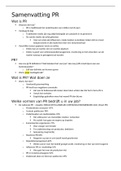Exam (elaborations)
NURSING NCLEX Module 9 NEW UPDATED PRACTICE EXAM QUESTIONS AND ANSWERS ALL SOLVED SOLUTION Carrington College
- Course
- NURSING NCLEX Module 9
- Institution
- Carrington College
NURSING NCLEX Module 9 NEW UPDATED PRACTICE EXAM QUESTIONS AND ANSWERS ALL SOLVED SOLUTION Carrington College A client who has undergone abdominal surgery calls the nurse and reports that she just felt “something give way” in the abdominal incision. The nurse checks the incision and notes the ...
[Show more]












